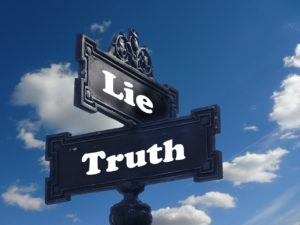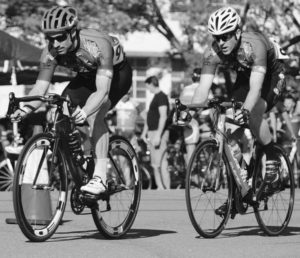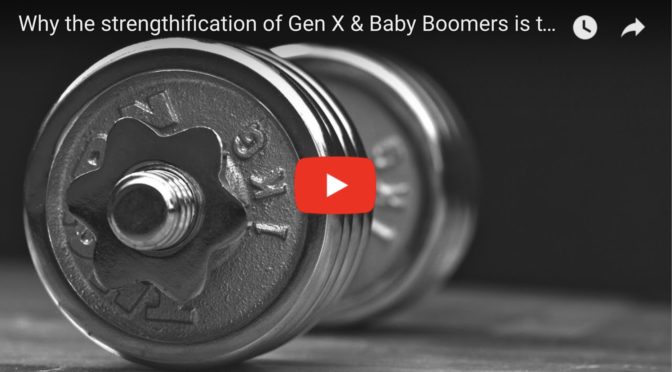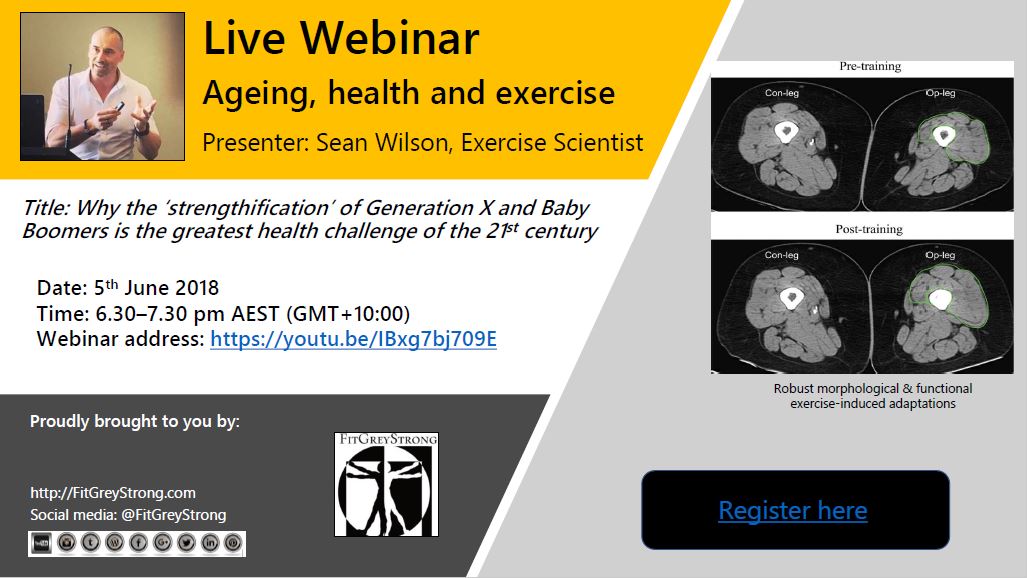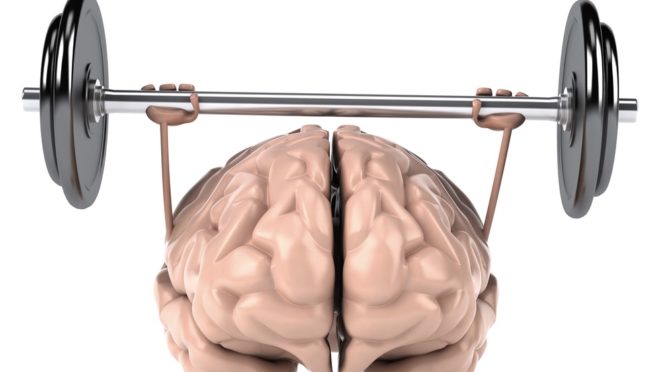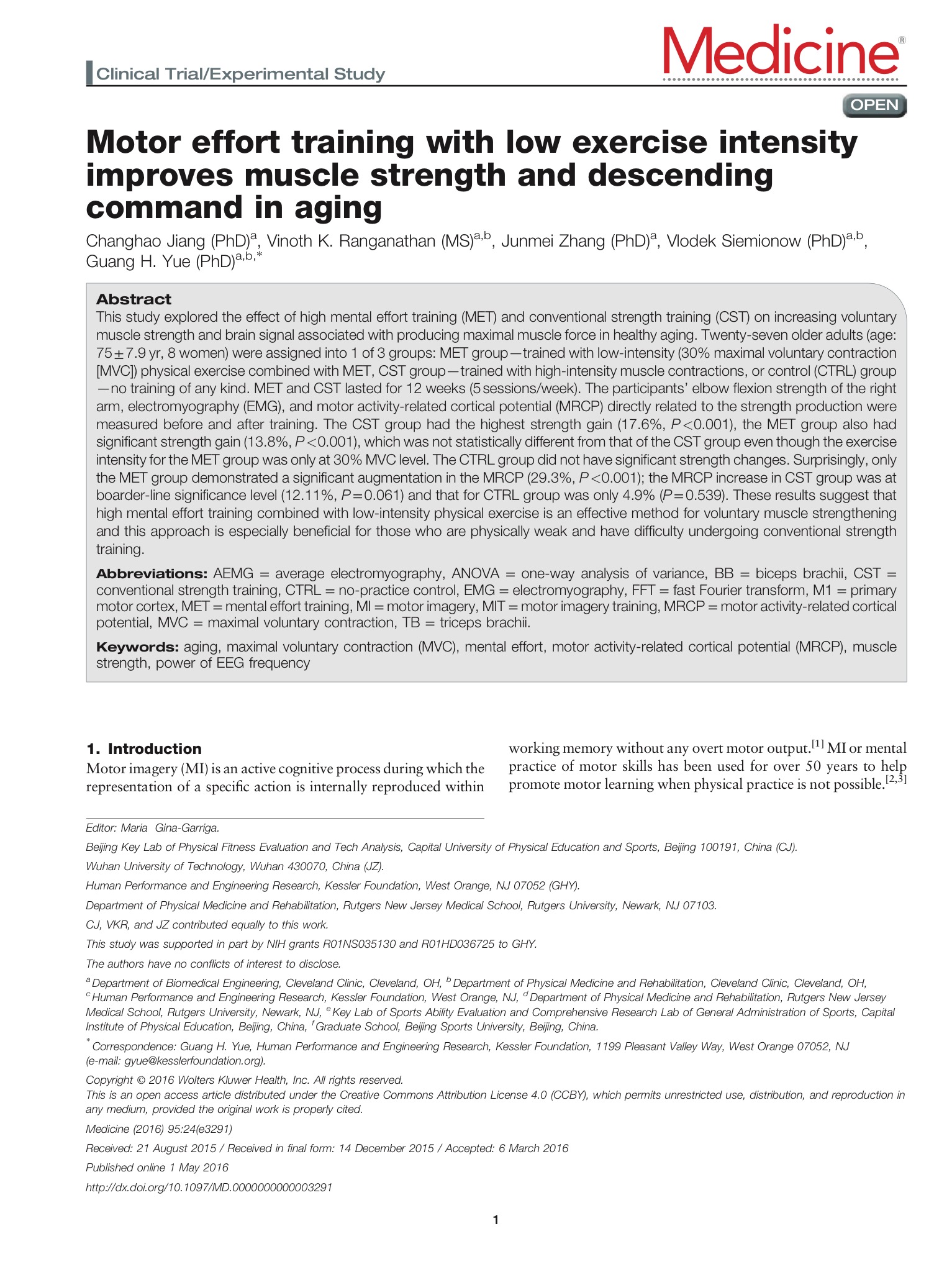It is often assumed that the best type of exercise – for treating obesity and therefore reducing current widespread levels of societal adiposity – is to preferentially increase aerobic or cardiorespiratory physical activity rather than resistance exercise or training. This assumption is based on the premise that aerobic-based exercise substantially increases total daily energy expenditure (TDEE) compared to the energy cost of resistance training. The argument goes that for the same amount of time invested (aerobic vs resistance exercise), significantly greater energy expenditure will occur in the former.
In fact, a good solid hour of ‘cardio’ can yield a net caloric expenditure of over 500 kcal. This of course varies depending on things like body mass, fitness level, the type of cardio exercise performed, exercise intensity and exercise efficiency. Nonetheless, it makes sense that an increase in TDEE would make it essentially easier to create an energy deficit which would thereby translate into improved body composition and decreased fat mass.

However, there are several caveats that must be mentioned which could affect just how successful weight loss and weight loss maintenance is if doing aerobic-only exercise. They include:
- Overestimating the energy expenditure of an activity therefore stifling weight loss with erroneous values assigned to a cardio session.
- Compensatory adaptation whereby weight loss is curtailed in some individuals with changes to Resting Metabolic Rate (RMR), non-exercise activity thermogenesis (NEAT), fasting appetite, satiety and increased fat consumption (see here for further information). Professor Neil King, currently based at Brisbane’s QUT Faculty of Health in Australia, has been instrumental in bringing these issues to light (see here).
- Recent evidence (see here) also suggests that TDEE may be constrained as aerobic activity levels increase. In other words, it has been shown that a plateauing effect on total energy expenditure occurs in those performing high amounts of aerobic-based physical activity. This lends support to the notion that metabolic adaptation constrains energy expenditure with increased physical activity. Theoretically, it is proposed that this would have probably helped facilitate survival during our evolution.
- Research demonstrates that nutritional manipulation combined with aerobic exercise so that an energy deficit exists (a prerequisite for fat loss), causes a loss of lean body mass (LBM) with such loss causing decreases to RMR (see Villareal et al). It is very common to see exercisers lose significant amounts of LBM when only aerobic exercise is undertaken while in an energy deficit state.
- The loss of LBM is not desirable for 2 key reasons. Firstly, functional physical capacity could be affected in both the short and long term (see Villreal et al). Secondly, resting metabolic rate will be reduced thereby making weight loss more difficult and weight regain more likely (see here for further discussion). Such alterations would make continued fat loss increasingly more difficult as energy intake would have to adjust to allow for the decrease in TDEE that would occur concomitantly with decreased LBM.
- Some research has shown that appetite is suppressed more so with resistance versus aerobic exercise. Appetite attenuation would help facilitate the likelihood of achieving sustainable weight loss.
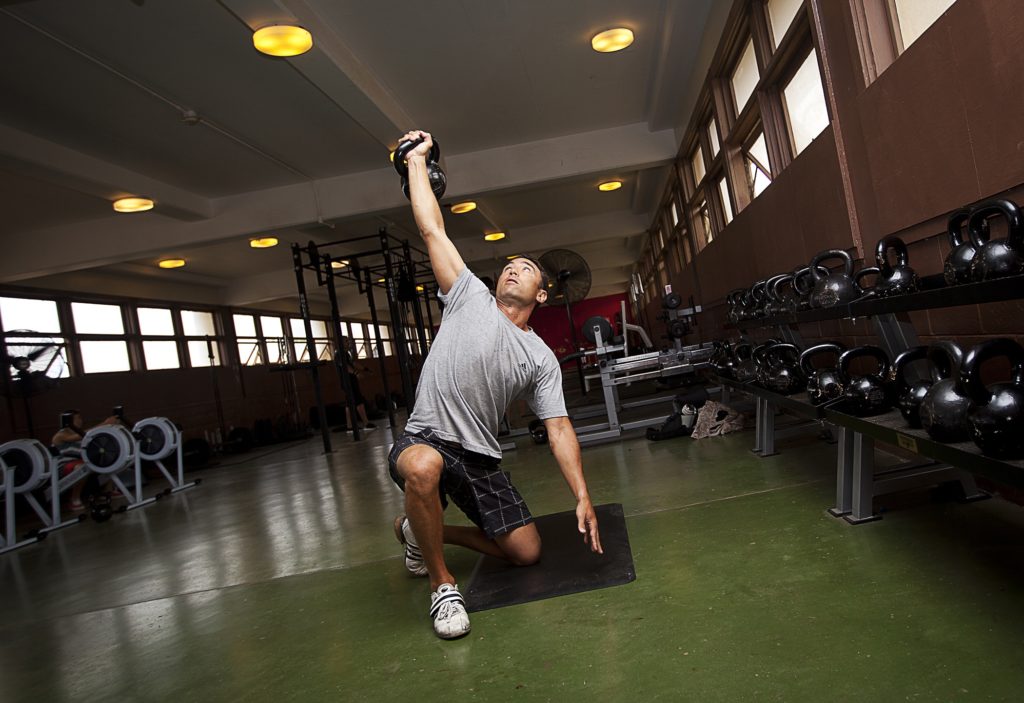
Recently Clemens Drenowatz from the Department of Exercise Science, University of South Carolina, headed up a study to examine the effect of different exercise types on measures of adiposity across different fat categories i.e. healthy, overfat and obese.
The term overfat was probably used instead of overweight so that a distinction could be made between high adiposity, low LBM versus low adiposity, high LBM. By that I mean, measuring body weight alone does not discern the proportionate breakdown of fat mass and lean body mass. As an example, you could have 2 men, same height, same weight, but with totally different body compositions in terms of percentage body fat. Increased chances of premature death and health morbidism are correlated not to LBM but to increasingly high levels of adipose tissue, in particular, visceral adiposity (internal fat rather than subcutaneous fat).
The key difference noted for this study was that the researchers did not prescribe an exercise program but rather allowed those involved in the study to self-select what activities to partake in and then assessed what effect those choices had on subsequent measures of body composition.
Three-hundred and forty-eight young adults (n=348) provided valid data over a 12 month period. Body composition, fat mass (FM) and lean mass (LM) were measured via a procedure known as dual x-ray absorptiometry every 3 months. Following this, percent body fat was calculated and then used to distinguish normal-fat, overfat and obese. Specifically, percent body fat ranges were less than 20% and 33% for normal fat, 20%-25% and 33%-39% for overfat, and equal to greater than 33% and 39% for obese in men and women, respectively.
Every 3 months participants reported engagement in aerobic exercise, resistance exercise and other forms of exercise such as tennis or football. Time per week spent engaged in endurance exercise, resistance exercise and other exercise was calculated. TDEE, RMR, physical activity level, and energy intake were also ascertained.
The majority of participants (93%) reported some exercise in the observation period. Surprisingly, differences existed as to what type of exercise showed the greatest benefit – for those either classified as normal-fat, overfat and obese – on reducing fat mass, increasing lean body mass and improving overall body composition.
For normal-fat participants, any type of exercise positively affected lean body mass; however fat mass was unaffected by any type of exercise. BMI and percentage body fat in normal-fat participants held steady. It was not an explicit aim of the study to bring about weight or fat reduction so this demonstrates that in those that are relatively lean, homeostasis for fat mass is robust.
Contrastingly, in overfat and obese participants, fat mass was reduced with increasing resistance exercise but not with aerobic exercise. Even adjusting for objectively assessed physical activity did not alter these results thereby suggesting that the real-world effectiveness of resistance exercise is particularly more potent than aerobic exercise to induce a decrease of fat mass in obesity.

The findings of this study have some important implications for exercise program design aimed at achieving body fat loss and reducing adiposity. With reliance on aerobic exercise continuing to dominant most weight/loss programs, we now have a growing body of evidence that is questioning this approach despite the fact that there is a greater ‘per-minute’ energy expenditure associated with aerobic compared to resistive exercise.
As mentioned above there are several factors that may constrain just how effective aerobic exercise is for altering body composition. Resistive but not aerobic exercise has also recently been shown to increase non-exercise physical activity (Hunter et al. 2015). Furthermore, resistive exercise was shown recently in a 12-year cohort study to have the strongest association with less waist circumference increase compared to aerobic exercise (Mekary et al. 2015). Taken together, these novel findings suggest that resistive exercise should always be included with aerobic exercise in those considered overfat or obese if the primary objective is to reduce fat mass.
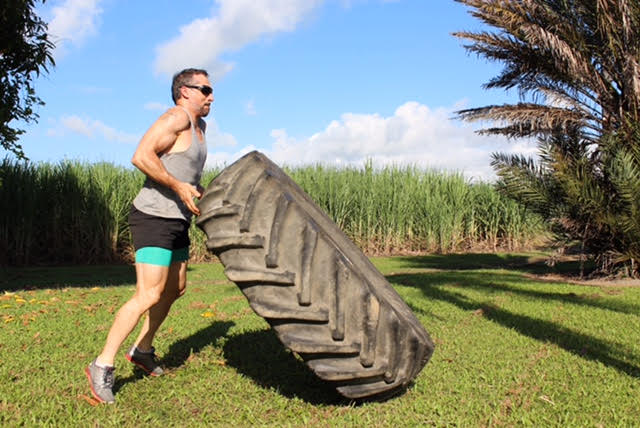
FitGreyStrong’s recommendation: To optimise the effectiveness of exercise interventions in bringing about positive body compositional changes in those carrying excessive body fat, resistive exercise should be a pivotal component of any exercise program undertaken. Aerobic exercise remains a critically important component of any intervention for improving health and should still be incorporated on a daily basis if possible or for a minimum total period of 150 minutes/week at a moderate intensity. However, it is important to be mindful that a ‘Goldilocks’ or sweet spot may exist for some people whereby over-doing aerobic exercise may be counterproductive in terms of maximising fat loss due to factors that have been outlined above.
Basic weekly recommendations for a older beginners-to-intermediate resistance exercise intervention designed to reduce obesity would look something like this:
- Two sessions per week
- 30-40 minutes in duration not including warm-up
- Focus on working all major muscle groups primarily based on compound, multi-jointed non-machine orientated movements.
- 1-2 work sets
- 6-30 repetitions. The load is not important, the effort is. All loads in older adults have shown to be effective and produce comparable changes in muscle strength and hypertrophy, muscle endurance, bone density and physical function.
- Controlled tempo (3-4 seconds on the eccentric, 0-2 seconds on transition, 1-2 seconds concentric, 1 seconds pause then repeat; if you are not sure what this mean please contact me)
- 60-180 seconds rest between sets. If stronger or more experienced, try longer rests on high effort sets.
- At least 48 hours between sessions for recovery
- Consume 40 g whey protein post-exercise to maximise muscle protein synthesis rates (see here for an outline on the research supporting post-exercise protein).
References
Blundell J. et al. (2010) “Appetite control: methodological aspects of the evaluation of foods.” Obe Rev 11(3): 251-270
Broom, D.R. (2008) “Influence of resistance and aerobic exercise on hunger, circulating levels of acylated ghrelin, and peptide YY in healthy males” American Journal of Physiology. 296(1): R29-R35.
Drenowatz, C. et al. (2015) “The prospective association between different types of exercise and body composition” Medicine & Science in Sports & Exercise 47(12): 2535-2541.
Hunter, GR. Et al. (2015) “Exercise training and energy expenditure following weight loss” Medicine & Science in Sports & Exercise 47(9): 1950-1957
King, N.A. et al (2012) “Exercise, appetite and weight management: understanding the compensatory responses in eating behaviour and how they contribute to variability in exercise-induced weight loss.”British Journal of Sports Medicine 46(5):315-22.
King N.A. et al. (2008) “Individual variability following 12 weeks of supervised exercise: identification and characterization of compensation for exercise-induced weight loss.” International Journal of Obesity. 32: 177-184
King N.A. et al. (2009) “Dual-process action of exercise on appetite control: increase in orexigenic drive but improvement in meal-induced satiety.” Am J Clin Nutr. 90: 921-927
Mekary RA et al. (2015) “Weight training, aerobic physical activities, and long-term waist circumference change in men” Obesity 23(2): 461-476
Melanson, E.L. et al. (2013) “Resistance to exercise-induced weight loss: compensatory behavioural adaptations” Med Sci Sports Exerc.August; 45(8): 1600-1609.
Peterson N.D. et al. (2014) “Dietary Self-Monitoring and Long-Term Success with Weight Management”. Obesity 22, 1962–1967
Villareal D.T. et al. (2011) “Weight Loss, Exercise, or Both and Physical Function in Obese Older Adults.” N Engl J Med 364(13): 1218-1229
For local Townsville residents interested in FitGreyStrong’s Exercise Physiology services or exercise programs designed to improve body composition, reduce body fat, increase fitness and strength or to enhance athletic performance, contact FitGreyStrong@outlook.com or phone 0499 846 955 for a confidential discussion.
For other Australian residents or oversees readers interested in our services, please see here.
Disclaimer: All contents of the FitGreyStrong website/blog are provided for information and education purposes only. Those interested in making changes to their exercise, lifestyle, dietary, supplement or medication regimens should consult a relevantly qualified and competent health care professional. Those who decide to apply or implement any of the information, advice, and/or recommendations on this website do so knowingly and at their own risk. The owner and any contributors to this site accept no responsibility or liability whatsoever for any harm caused, real or imagined, from the use or distribution of information found at FitGreyStrong. Please leave this site immediately if you, the reader, find any of these conditions not acceptable.
© FitGreyStrong


